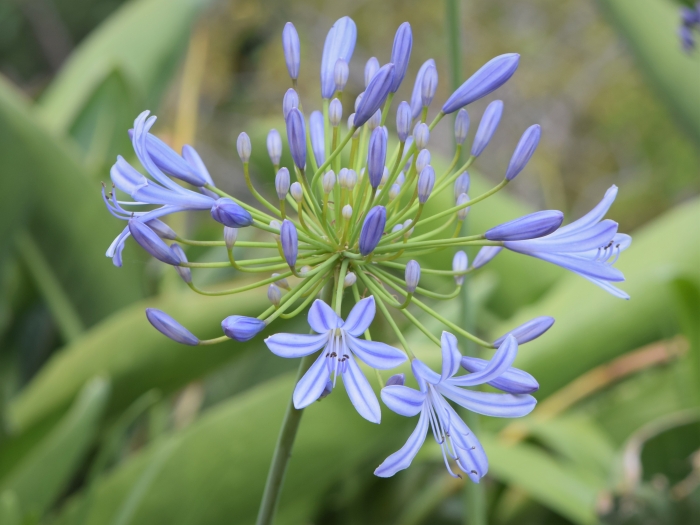African Lily
(Agapanthus africanus)
African Lily (Agapanthus africanus)
/
/

Krzysztof Ziarnek, Kenraiz
CC BY-SA 4.0
Image By:
Krzysztof Ziarnek, Kenraiz
Recorded By:
Copyright:
CC BY-SA 4.0
Copyright Notice:
Photo by: Krzysztof Ziarnek, Kenraiz | License Type: CC BY-SA 4.0 | License URL: https://creativecommons.org/licenses/by-sa/4.0 | Uploader: Kenraiz | Publisher: Wikimedia Commons | Title: Agapanthus_africanus_kz01.jpg | Notes: |













































Estimated Native Range
Summary
Agapanthus africanus, commonly known as African lily or incorrectly as lily-of-the-Nile, is a perennial herb native to the rocky sandstone slopes of the winter rainfall fynbos from the Cape Peninsula to Swellendam in South Africa. It typically grows to a height of 60 cm (24 inches) and spreads to about 30 cm (12 inches). The plant forms clumps of strap-shaped, arching leaves and is known for its striking umbels of tubular flowers, which are pale to deep blue with a distinctive dark blue stripe down the center of each petal. The subspecies Agapanthus africanus walshii tends to have paler flowers, while Agapanthus africanus africanus exhibits darker blooms. Flowering occurs from November to April, peaking from December to February, and is particularly prolific after fire events.
The African lily is valued for its showy flower clusters that make a dramatic display in rockeries and as a potted specimen. It is less commonly used in general garden planting due to its specific growing requirements. In cultivation, it prefers a well-drained, slightly acidic sandy mix and thrives in shallow pots. Regular feeding with a slow-release fertilizer can encourage blooming. It requires minimal watering during hot and dry summers and is best suited to regions with a Mediterranean climate. Despite its beauty, Agapanthus africanus is considered potentially invasive outside its native range and should be planted with caution.CC BY-SA 4.0
The African lily is valued for its showy flower clusters that make a dramatic display in rockeries and as a potted specimen. It is less commonly used in general garden planting due to its specific growing requirements. In cultivation, it prefers a well-drained, slightly acidic sandy mix and thrives in shallow pots. Regular feeding with a slow-release fertilizer can encourage blooming. It requires minimal watering during hot and dry summers and is best suited to regions with a Mediterranean climate. Despite its beauty, Agapanthus africanus is considered potentially invasive outside its native range and should be planted with caution.CC BY-SA 4.0
Plant Description
- Plant Type: Bulb
- Height: 1.5-2 feet
- Width: 1.5-2 feet
- Growth Rate: Moderate
- Flower Color: Blue, Purple, White
- Flowering Season: Summer
- Leaf Retention: Evergreen
Growth Requirements
- Sun: Full Sun, Part Shade
- Water: Medium
- Drainage: Medium
Common Uses
Bee Garden, Bird Garden, Border Plant, Butterfly Garden, Deer Resistant, Drought Tolerant, Hummingbird Garden, Potted Plant, Rabbit Resistant, Rock Garden, Salt Tolerant, Showy Flowers, Street Planting
Natural Habitat
Rocky sandstone slopes of the winter rainfall fynbos in South Africa
Other Names
Common Names: Lily Of The Nile, Blue Lily-Of-The-Nile, Bloulelie, 百子蓮
Scientific Names: , Agapanthus africanus, Agapanthus umbellatus, Crinum africanum, Mauhlia linearis, Tulbaghia africana, Tulbaghia africana var. heisteri, Abumon africanum, Agapanthus minor, Agapanthus tuberosus
GBIF Accepted Name: Agapanthus africanus (L.) Hoffmanns.